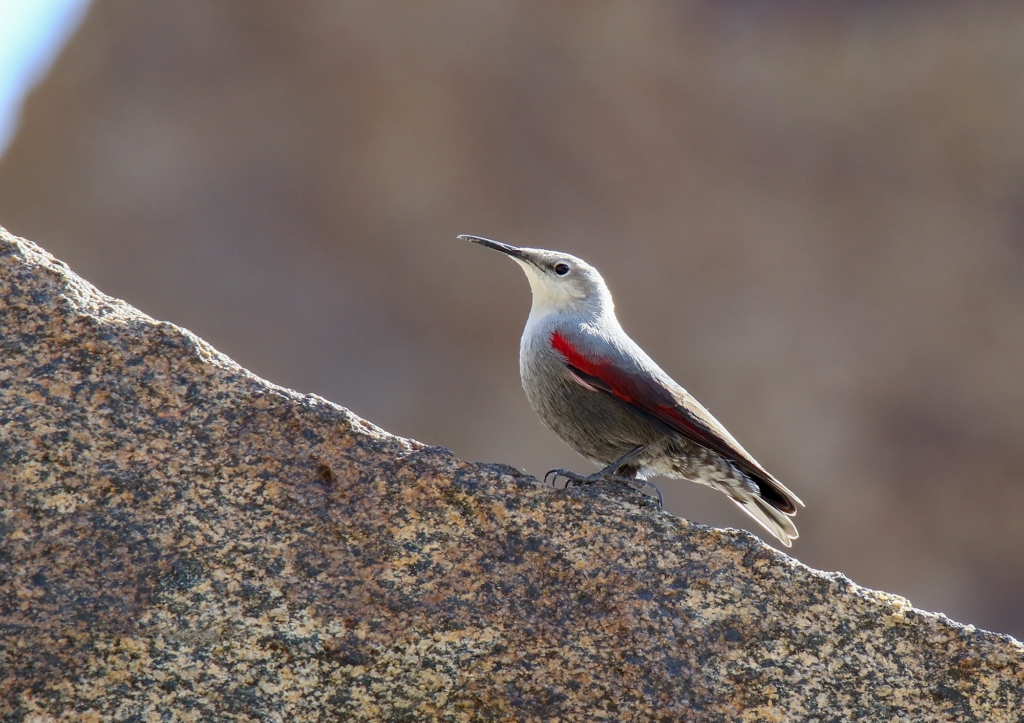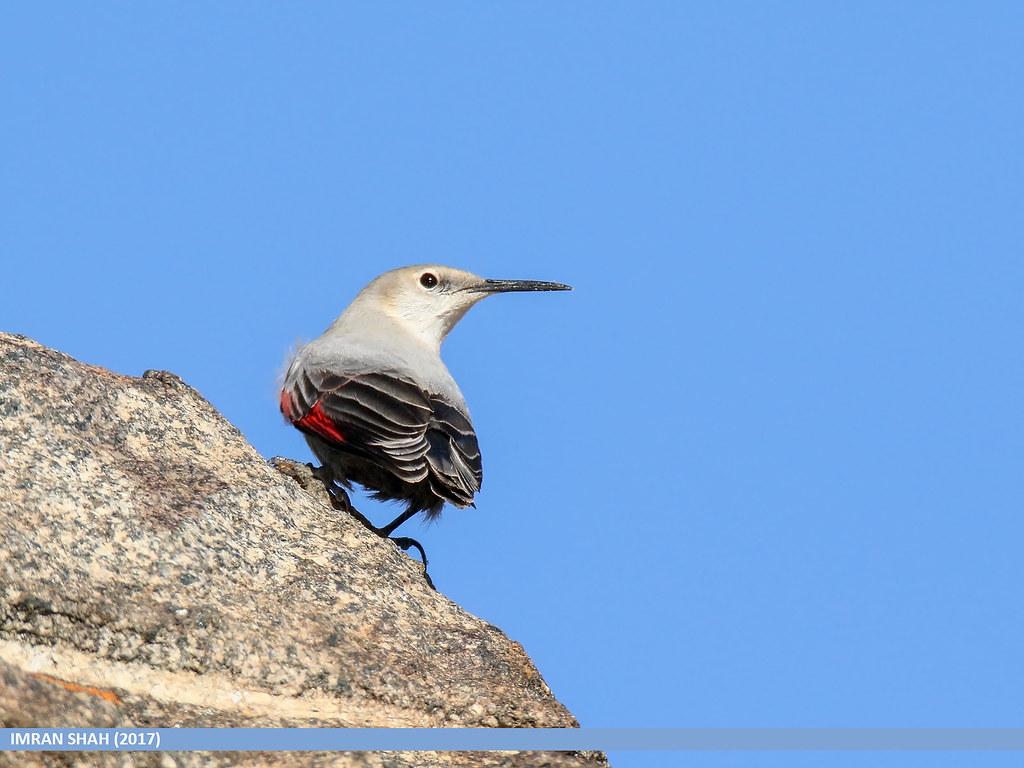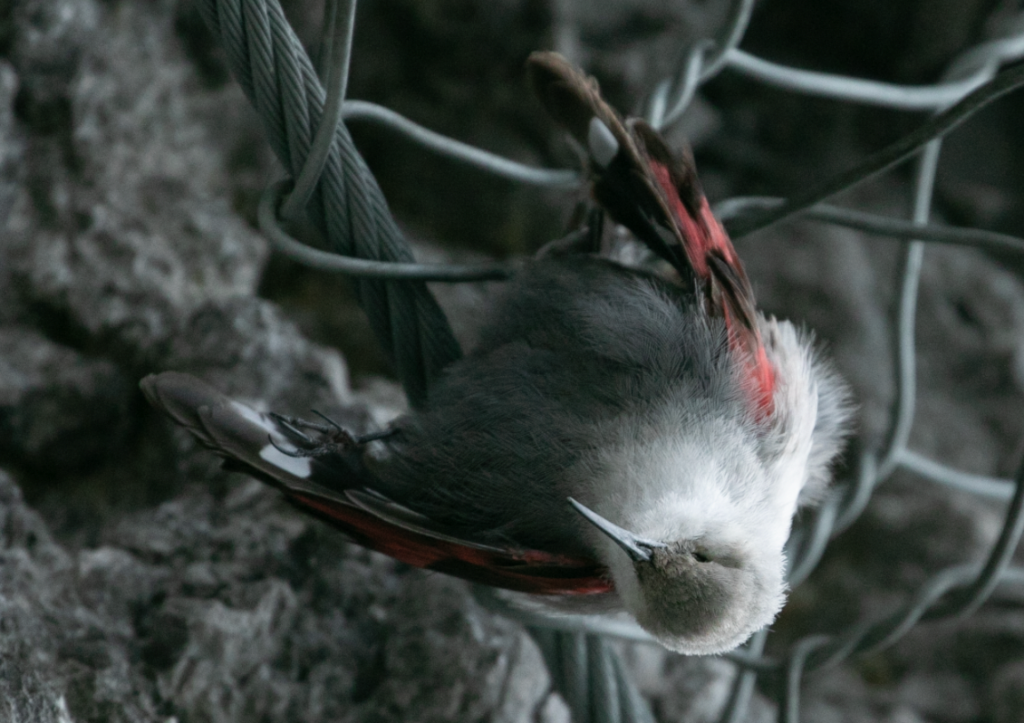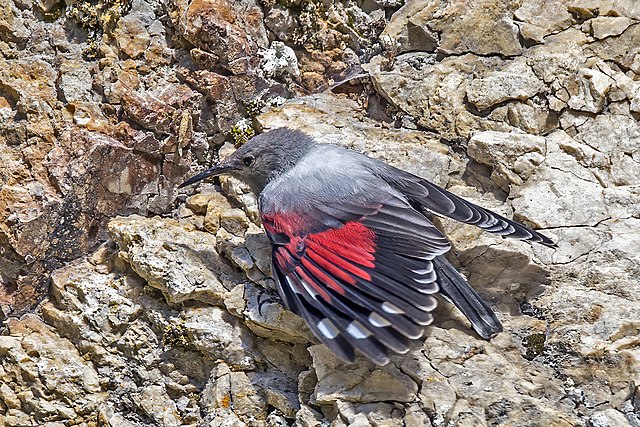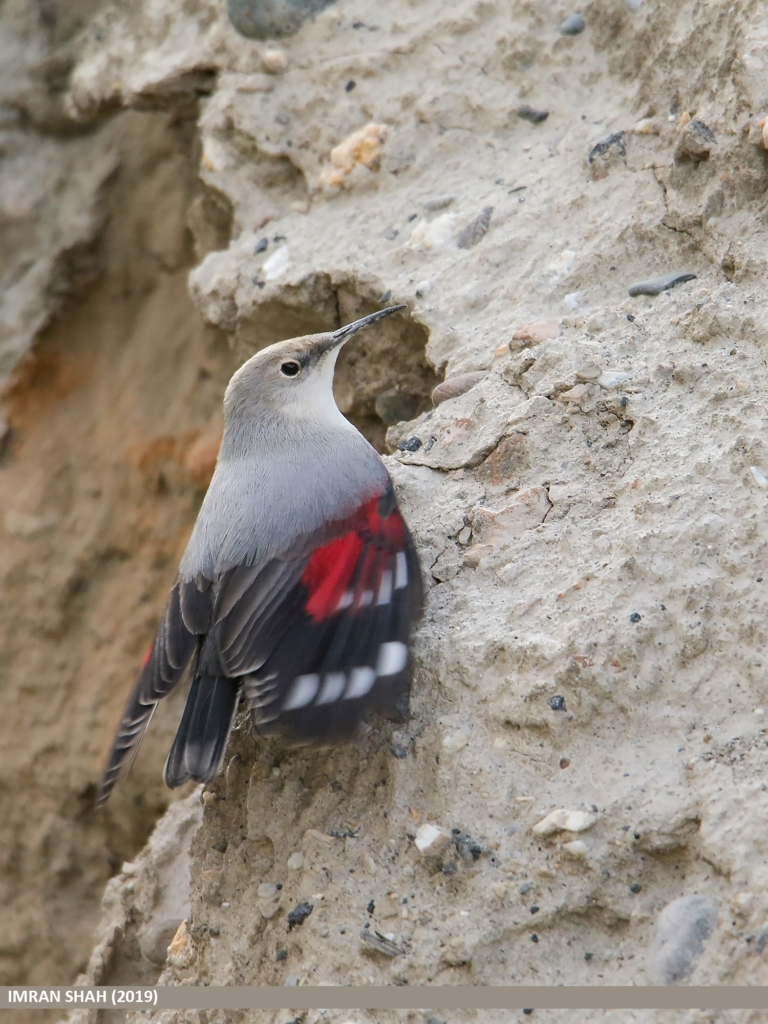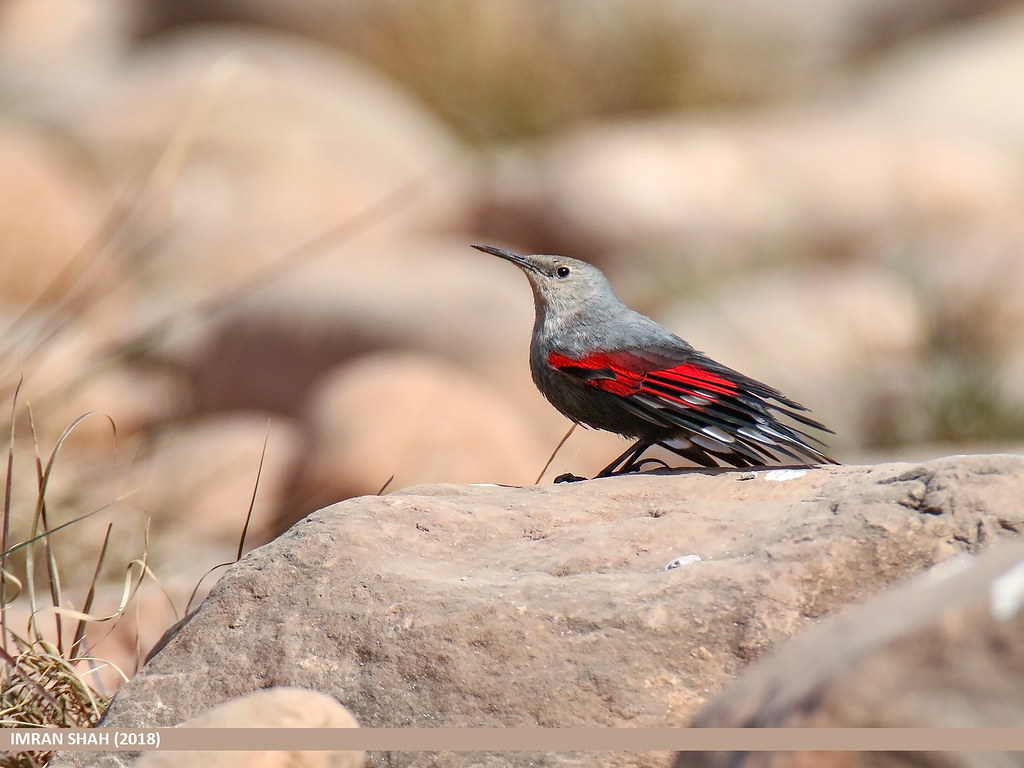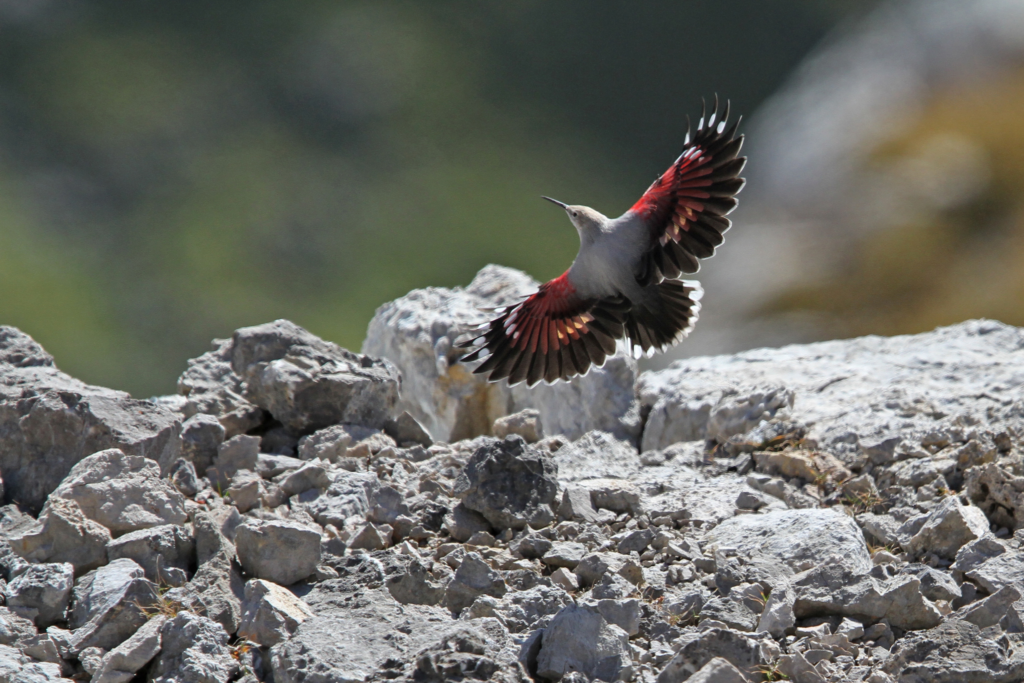The Wallcreeper Resembling Giant Monarch Butterflies in Flight
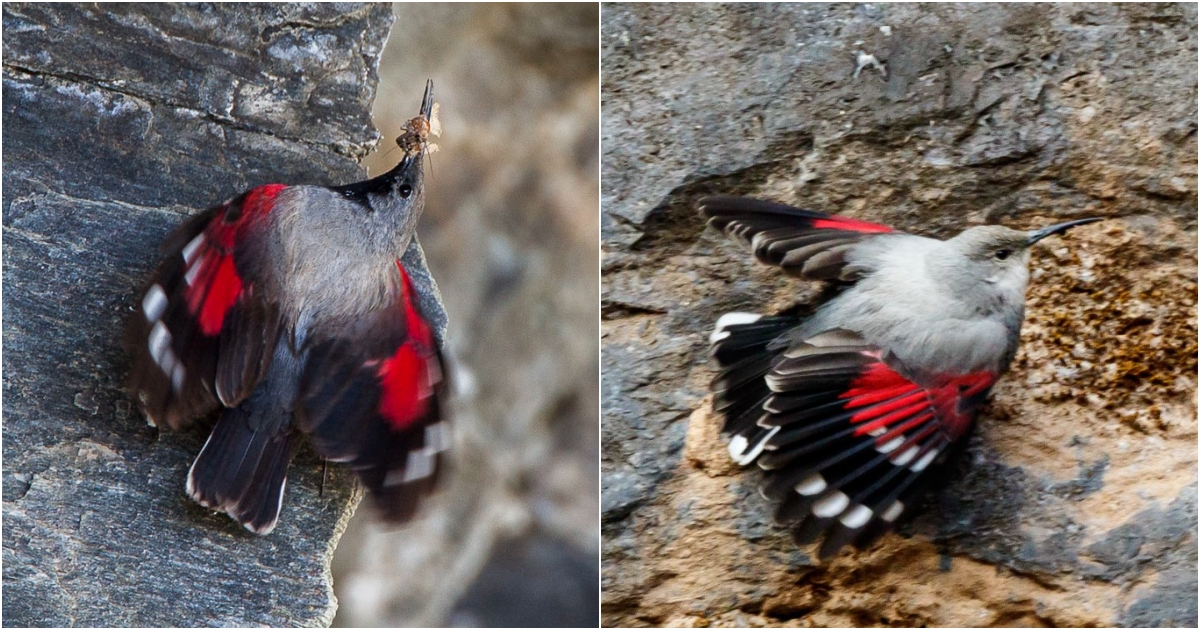
The Wallcreeper, a majestic and elusive bird, is a sight to behold in flight. With its broad black, red, and white-spotted wings, it bears a striking resemblance to a giant monarch butterfly gracefully gliding through the air. However, spotting these enchanting creatures can be quite a challenge, as they often blend seamlessly into their rocky habitats.

Adult male Wallcreepers in their breeding plumage boast a stunning pattern on their gray upper parts, adorned with carmine-red lesser and median coverts, as well as red-pink on the alula. The flight feathers are a dark gray, accented with carmine-red bases on the outer edges and black tips, while four outer primaries showcase two white spots each. The underparts of adult males feature a black chin, throat, and breast, with the rest of the underparts being dusky gray. On the other hand, adult females have a grayish-white lower throat and upper breast with a black patch of varying size.
In non-breeding plumage, both sexes appear paler gray above with a whitish chin, throat, and breast, lacking the black throat patch. Juveniles resemble non-breeding adults but have a brownish throat and more uniformly gray plumage.
The Wallcreeper thrives in various rocky habitats, including steep cliffs, boulder-strewn slopes, and gorges. They require holes and crevices for nesting and roosting, and their habitat may also include rocky ledges, grass, moss, shrubs, trees, and areas with running water. During winter, they can be found at lower elevations, including cliffs near the sea and even buildings in cities.
This remarkable bird is not only visually captivating but also boasts a beautiful song throughout the year. During the breeding season, they produce ascending clear whistles with lower-end notes. Both males and females sing as advertising calls to establish their territories outside of the breeding season. The Wallcreeper’s vocalizations are unique, with some races having distinctive whistled notes rising gently, followed by high-pitched notes.
As they forage for insects, spiders, and other invertebrates, Wallcreepers display their incredible acrobatic skills, moving along rocky cliffs and walls with short hops, sidling, creeping, and even walking. They can perform upward leaps with a single rapid wing beat, allowing them to catch prey from vertical surfaces. Their unique feeding behavior includes extracting invertebrates from rocky crevices and turning leaf litter with their closed bills. Wallcreepers are tenacious hunters and have been observed beating their largest prey against a flat stone to dismember it.
These birds undertake migratory journeys, primarily engaging in short-distance and altitudinal migrations depending on the season. During the breeding season, they form monogamous pairs and construct nests in rock crevices, boulders, or even buildings. The nest is skillfully crafted using materials like moss, plant fibers, rootlets, and grass. Both parents actively participate in feeding the chicks, with the male bringing food to the nest and the chicks eagerly awaiting their meals.
The Wallcreeper’s captivating beauty, mysterious nature, and acrobatic prowess make it a treasured sight for birdwatchers and nature enthusiasts. These graceful birds serve as a reminder of the wonders of the natural world and the importance of preserving their unique habitats. Let us marvel at their elegance and take inspiration from their resilience in their rocky environments.
